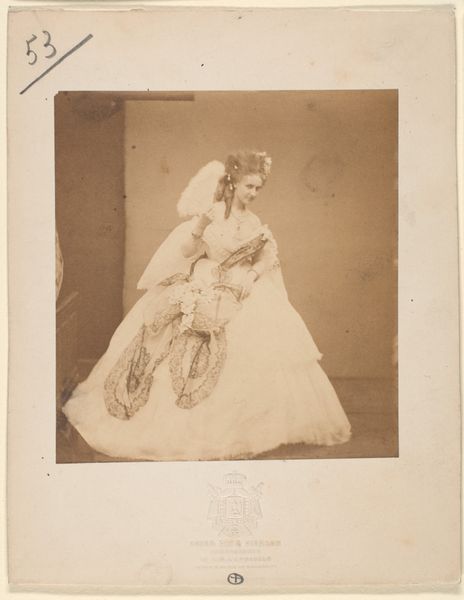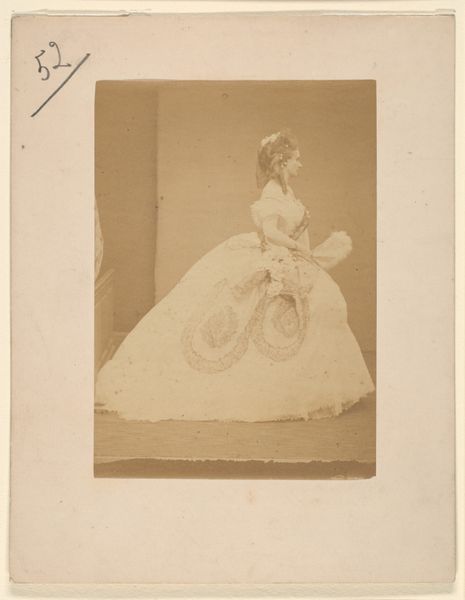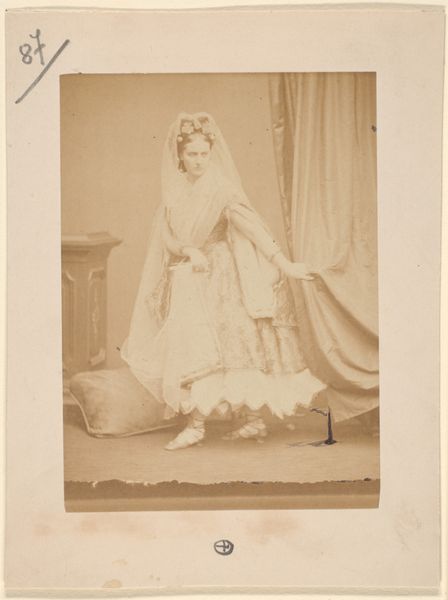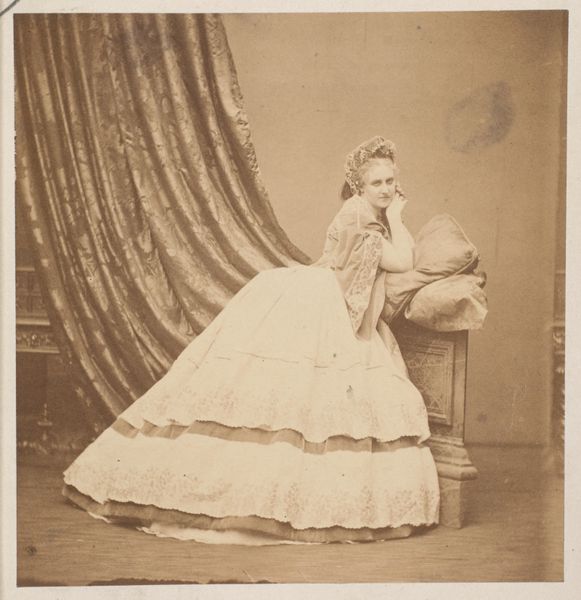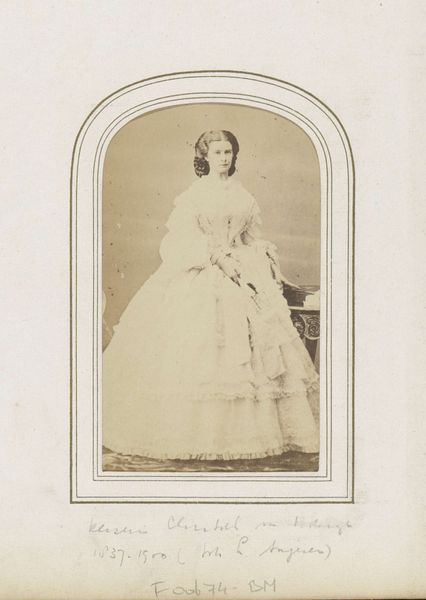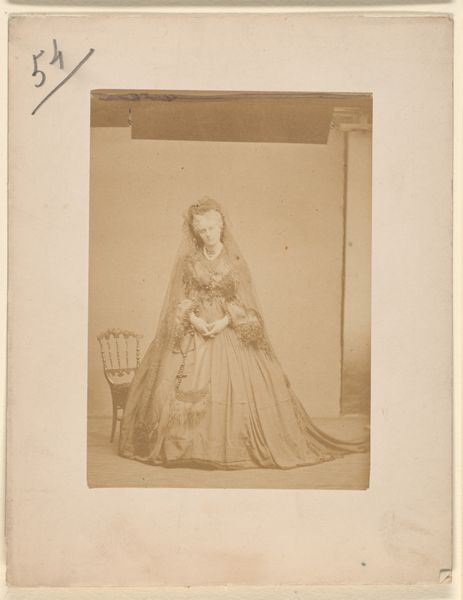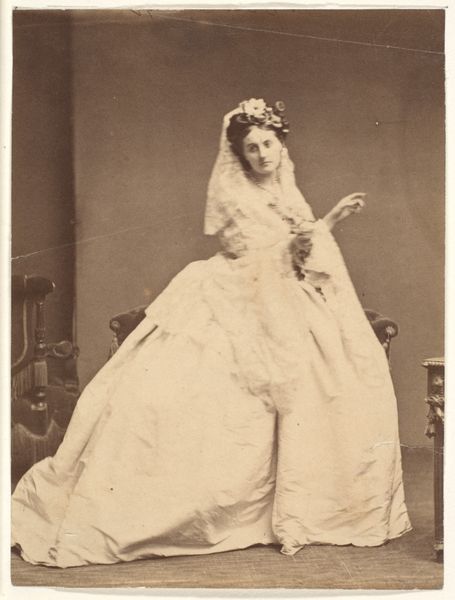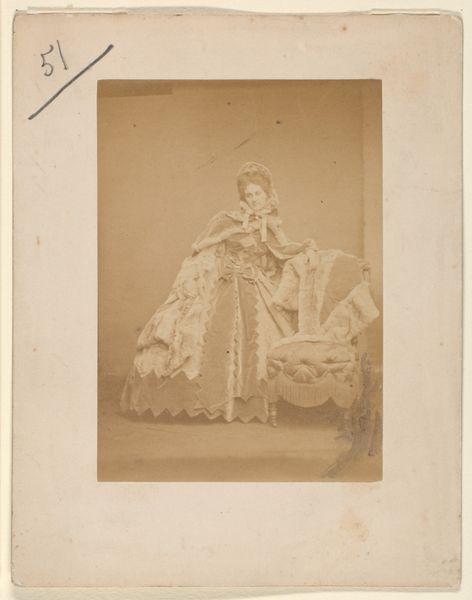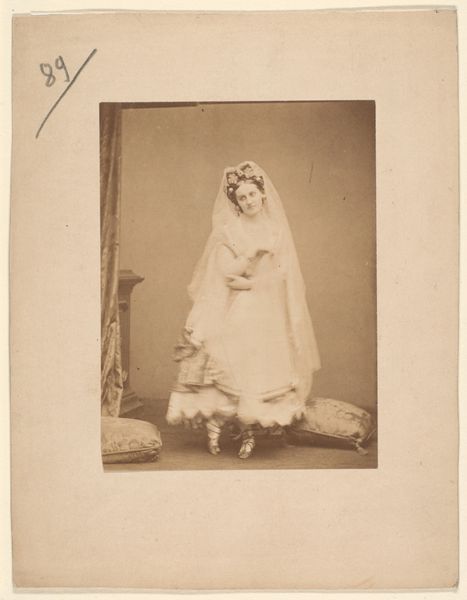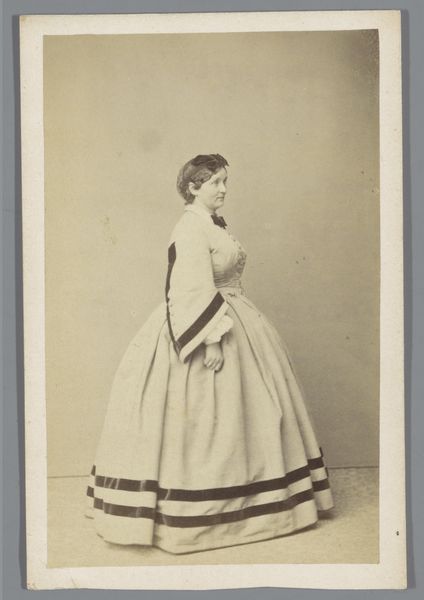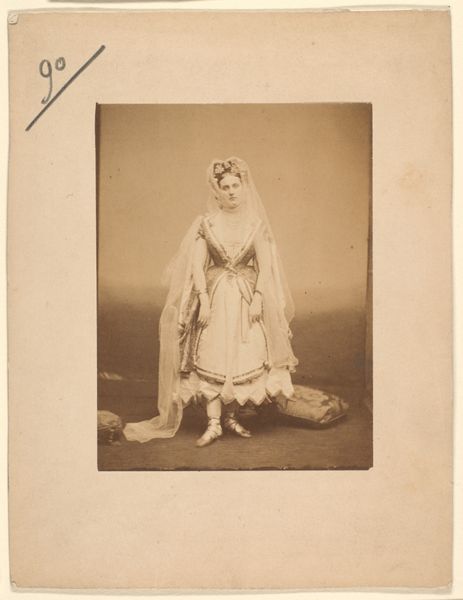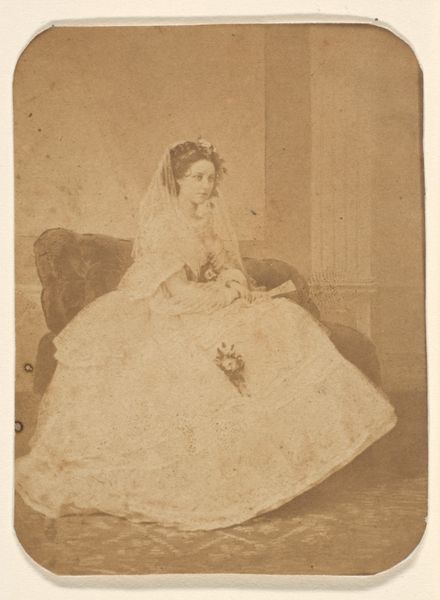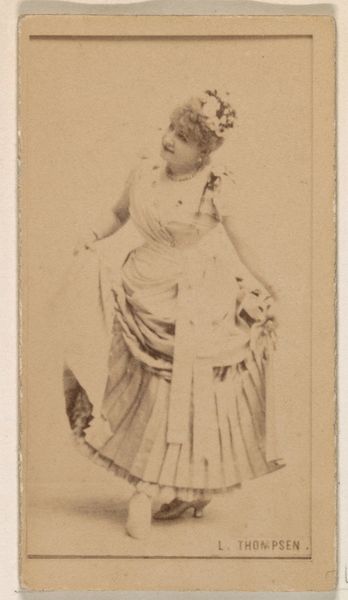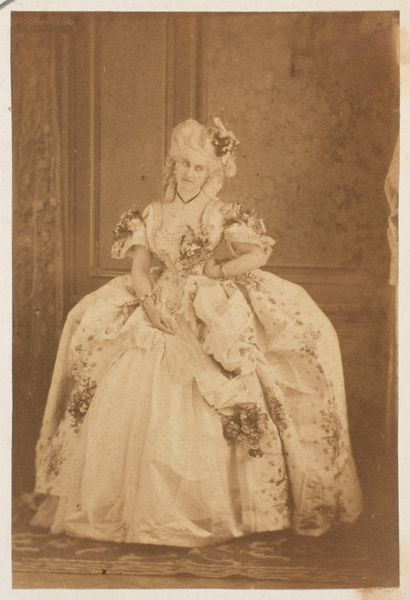
Copyright: Public Domain
Curator: Welcome. Let’s turn our attention to “L’Agrèable,” an albumen print photograph created in the 1860s by Pierre-Louis Pierson, currently housed at the Metropolitan Museum of Art. This portrait exemplifies a distinct romanticism that defined much of the art of its era. Editor: Well, “agréable” certainly seems right. I see lace, an enormous skirt—very proper, very poised, and, dare I say, very staged? The kind of dress that demands a certain kind of behavior, almost forcing her into this perfect lady pose. Curator: That’s an insightful observation. Pierson was known for his collaborative work with the Countess de Castiglione, a prominent figure in the Second Empire. She leveraged photography to cultivate her image. We must remember that in that time the construction of identity relied very heavily on controlled performativity and access to technological novelties, for example, the ability to be photographed. Editor: So, it’s less about capturing a ‘real’ person and more about crafting an ideal, a social role carefully curated through dress and pose. I find myself wondering how much of her ‘self’ is truly there versus the elaborate fabrication of a social persona. What does being “agreable” really mean, and for whom? Curator: Precisely. “Agrèable" reflects not just a personal aesthetic but also broader societal expectations of women, their role in society, and how they navigate political and social power structures through beauty and presentation. Editor: It is quite subtle. There’s a delicacy here, almost as if the image itself is a whisper of the woman’s expected virtues: grace, charm, elegance, everything deemed desirable for women in that era. Makes you wonder about all those hidden pressures lurking behind that smile. Curator: Indeed. Considering the historical context provides a crucial framework for examining not just the artwork but also the embedded sociopolitical messaging concerning identity and representation, specifically of gender during this historical period. Editor: I like that this photograph, this careful performance of beauty and compliance, sparks thoughts of resistance. Almost feels like that smile holds secrets that might turn the whole idea of being 'agréable' on its head. Curator: I believe the act of critically analyzing this kind of photographic art encourages us to think more deeply about identity politics and consider what remains unsaid, thus adding enriching layers to how we engage with it. Editor: Agreed! You know, art never ceases to be more layered than lace, huh? A real reflection of what was then, as much as now!
Comments
No comments
Be the first to comment and join the conversation on the ultimate creative platform.
